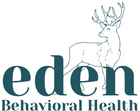OCD In Children and Teens: Tips, Symptoms, OCD Tantrums
Parenting OCD, School Challenges, How To Help, OCD And Tics, What Is OCD, OCD Checklist, OCD Development
What You'll Learn
OCD In Kids, Symptoms, What Parents Can Do, OCD Behaviors, How To Help
OCD In Children and Teens
Obsessive-Compulsive Disorder (OCD) is characterized by persistent, unwanted thoughts or urges (obsessions) and repetitive behaviors (compulsions) aimed at reducing anxiety related to those obsessions. While adults often recognize their obsessions or compulsions as irrational, children and teens may not. Early signs can be mistaken for “quirky” behaviors or simple worrying.
Key Point: With the right interventions—therapy, at-home support, and sometimes medication—young people with OCD can learn to manage symptoms and live healthy, fulfilling lives.
What Is OCD In A Child?
Obsessions: Intrusive thoughts, fears, or images that cause anxiety. For example, excessive worries about germs, safety, or the need for things to be “just right.”
Compulsions: Repetitive actions taken to relieve the anxiety caused by obsessions. Examples include excessive handwashing, checking doors or locks, or rearranging items repeatedly.
Crucial Point: Children may struggle to articulate why they need to perform certain actions. They simply feel compelled to do them to relieve a sense of dread or discomfort.
Identifying and Understand Symptoms
Symptoms: Identify & Understand
Behavioral Indicators: Frequent handwashing, asking for reassurance repeatedly, arranging and rearranging objects, avoiding certain places or activities.
Emotional Signs: High anxiety, irritability when routines are interrupted, distress if unable to perform a ritual.
Cognitive Clues: Intrusive thoughts, worries about contamination or harm, difficulty focusing due to mental “checking.”
Actionable Tip
If you notice repeated behaviors or excessive worrying lasting more than a few weeks, track these patterns. A log of frequency, duration, and triggers can help professionals diagnose and treat OCD accurately.
OCD Tantrums
Children and teens with OCD can experience emotional outbursts or “tantrums” when they’re prevented from performing their compulsions or face intense anxiety. These outbursts are not just typical mood swings; they often stem from extreme fear or distress related to their obsessions.
Triggers: Interrupting a ritual, challenging irrational thoughts, or being rushed through a routine.
De-escalation: A calm, empathetic approach—acknowledging their distress while gently reinforcing boundaries—can be more effective than punishment.
Actionable Tip
Validate their feelings without enabling the compulsion. For instance, say, “I see you’re really anxious right now. Let’s try a grounding exercise together,” instead of allowing the child to carry on with a potentially harmful or time-consuming ritual.
Parenting OCD Child
Parenting strategies often differ from those used for children without OCD:
Educate Yourself: Learn about OCD to understand your child’s behaviors and thought processes.
Patience & Consistency: Expect ups and downs. Progress may happen slowly, but consistent support fosters resilience.
Balanced Reassurance: Constant reassurance can accidentally reinforce compulsions. Instead, encourage coping techniques (breathing exercises, positive self-talk).
Collaborate with Professionals: Therapists, pediatricians, and school counselors can provide tailored guidance. A team approach can yield better outcomes.
Actionable Tip
Consider a family-based therapy approach, where parents learn strategies to discourage compulsions and empower their child with healthier coping skills.
How OCD Affects School
- Concentration: Obsessive thoughts can be distracting, leading to incomplete work or slower processing.
- Social Challenges: Peer interactions might be affected if rituals or anxious behaviors draw attention.
- Avoidance: Some children avoid certain classes or activities if they fear triggers (e.g., contamination fears in art class).
Actionable Tip
Communicate with teachers and school counselors. An Individualized Education Program (IEP) or 504 Plan can ensure your child receives accommodations, such as extra time for assignments or a safe space to manage anxiety.
How To Help At Home
Create a Supportive Environment
Encourage Gradual Coping
Set Boundaries Around Behaviors
Model Healthy Coping
Actionable Tip
Praise your child for efforts to resist compulsions. Celebrating small victories—like successfully tolerating a short delay in ritual—boosts confidence and motivation.
OCD and Tics
Co-occurrence: Some children with OCD also experience tics—sudden, repetitive, involuntary movements or vocalizations (e.g., blinking, throat clearing).
Shared Neurological Basis: Both can be linked to imbalances in brain chemistry, particularly in areas related to habit formation and impulse control.
Actionable Tip
If your child exhibits signs of tics alongside OCD, mention it to their doctor or therapist. Treatment plans can be adjusted to address both conditions simultaneously.
Child OCD Checklist
Consider these key points when evaluating or discussing concerns with a professional:
Frequency of Rituals: How often is your child engaging in compulsive behaviors?
Duration: Do these rituals or obsessions take up significant portions of the day (e.g., more than an hour)?
Distress Level: Does your child appear highly anxious, upset, or incapacitated if they can’t complete a ritual?
Interference: Are academic performance, friendships, or family routines disrupted?
Family History: Do any relatives have anxiety, OCD, or related conditions?
Actionable Tip
Share this checklist and any documented behaviors with your pediatrician or a mental health professional. Detailed information leads to more accurate diagnoses and tailored interventions.
Do Children Grow Out Of OCD?
While some children experience a reduction in symptoms as they mature—especially with early intervention—OCD is not simply “outgrown.” Ongoing management strategies may be needed to handle stressors in different life stages (adolescence, college, new job, etc.).
Optimistic Outlook: With proper therapy (e.g., CBT with ERP), medication if appropriate, and parental support, many children learn to effectively cope with or significantly reduce OCD symptoms.
Long-Term Approach: Early treatment can lay the foundation for healthy coping mechanisms that last into adulthood.
Actionable Tip
Regular check-ins with a mental health professional during transitions (like changing schools or entering puberty) can catch early signs of relapse or intensifying symptoms.
